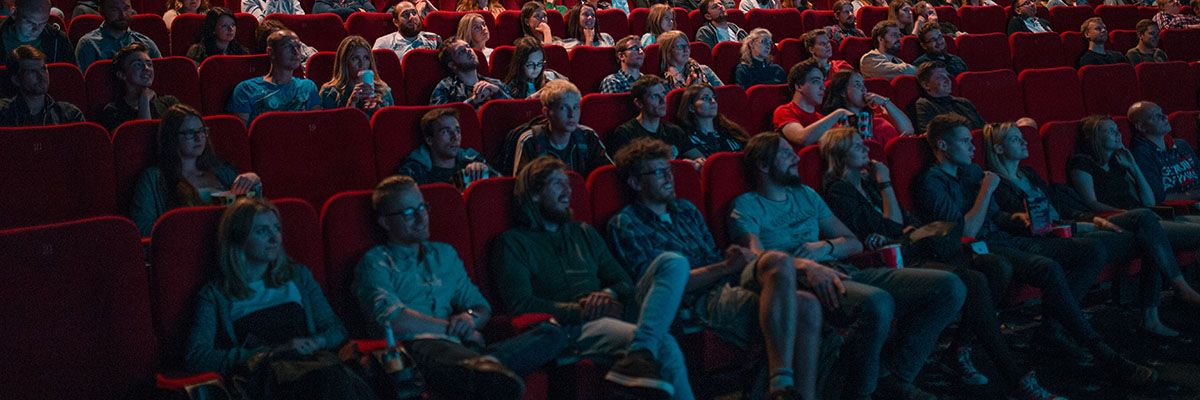
HVAC optimization for theaters and family entertainment venues
The latest blog in our series, looking at HVAC optimization for various types of facilities, brings us to theater and entertainment venues. Once again, we learn that each vertical industry has unique drivers guiding its heating and ventilation requirements.
The show must go on, and optimizing HVAC in theaters and entertainment centers is one of the reasons it does. As we’ll see in this blog, HVAC plays an essential role in keeping these facilities comfortable and safe for their audiences and, it turns out, in optimal shape for performers. In this industry, it’s not just thermal comfort but even acoustics (HVAC equipment can be large and noisy so care needs to be given to its location!) that come into the HVAC equation.
Key drivers
The primary heating and ventilation challenges faced by the theater and entertainment venue operator are:
- Thermal comfort (space) – as in other facilities, the thermal comfort of the building occupant is a primary driver, but unlike in different facilities, occupancy in an entertainment venue isn’t constant. Thus, the need for fresh air varies; and by extension, the flow rate must be controlled according to occupancy at any given time. Given that many venues now have more than one hall (multi-screen cinemas are the obvious example), the specific HVAC requirements across the entire facility can become relatively fine-grained. The opening night of a blockbuster may mean the main screen is full, while others may be relatively empty!
- Operating costs – we know that heating and ventilation represent the lion’s share of any facility’s energy bill. So, improving thermal efficiency can significantly reduce energy costs. Given that usage of spaces within the overall entertainment facility is generally sporadic, there’s a lot of room for optimization to impact the bottom line.
Discussion points for theaters and entertainment HVAC
Following the general drivers above, several specific points are worth discussing. First, the COVID-19 pandemic underlined the importance for theaters and entertainment venues to maximize ventilation, as good ventilation mitigates the risk of transmission of COVID and many other airborne pathogens. Given that public awareness of such issues has been heightened in the wake of the Coronavirus, optimal HVAC may be seen as a selling point from a safety and not just a comfort perspective for such venues.
Beyond this, facilities managers must give attention to defining what “optimal” means, given the layout of their facility. Which areas are more crowded than others? For how long is each area used? Do different areas have significantly different HVAC demands? Once this is understood, HVAC performance can be optimized to meet each additional space requirement.
As we can see, optimization of entertainment venues is not straightforward: Public areas such as auditoriums and bars are generally well-ventilated; However, over-occupancy can impact adequate ventilation. Meanwhile, in many foyers the presence of open doors provides a unique HVAC strategy challenge. Given all of the unique needs of different areas in theater and entertainment centers there is a lot to consider!
Stratification is a common challenge
Finally, stratification is another critical issue that should be considered, particularly from a health and safety perspective.
The nature of theaters and entertainment venues, with populated audience balconies hanging above the stalls and lighting gantries, etc., provide natural collection points for airborne pathogens. In these areas, greater ventilation is likely to be a requirement, so some areas of a facility will have different needs than even their immediate neighbor’s requirements. Bearing this in mind, “one fan speed fits all” is a poor recipe for operation, let alone optimization. CO2 monitoring can be a useful way of ensuring optimal ventilation rates are being realized, though this measure tends to be less accurate when occupancy levels are low.
Optimize with NexRev
In theater and entertainment centers, providing a safe, comfortable environment is essential for both customers and operators, all while controlling costs. Delivering such a reality means taking control of HVAC and energy consumption. The venue operator must:
- Tune energy consumption to meet the actual demand – and avoid waste.
- Maintain optimum temperature for enhanced customer comfort
- Connect sensors and devices across your real estate
- Use occupancy sensors to conserve costs
- Obtain rich insights for real-time management
These are complex and significant challenges, and in this blog, we’ve only touched on some key considerations and options for addressing them. The proper steps in each case require expert advice and analysis; we cannot over-stress that.
At NexRev, we’ve been unlocking the power of facility and energy management data with over a million connected devices across North America. Our experts focus on helping you deliver more with your budgets, infrastructure, and assets to create sustainable savings in operations and energy, reducing your risk and increasing operational confidence.
If you’re interested in learning more about our solutions to help your enterprise reduce energy costs, please email